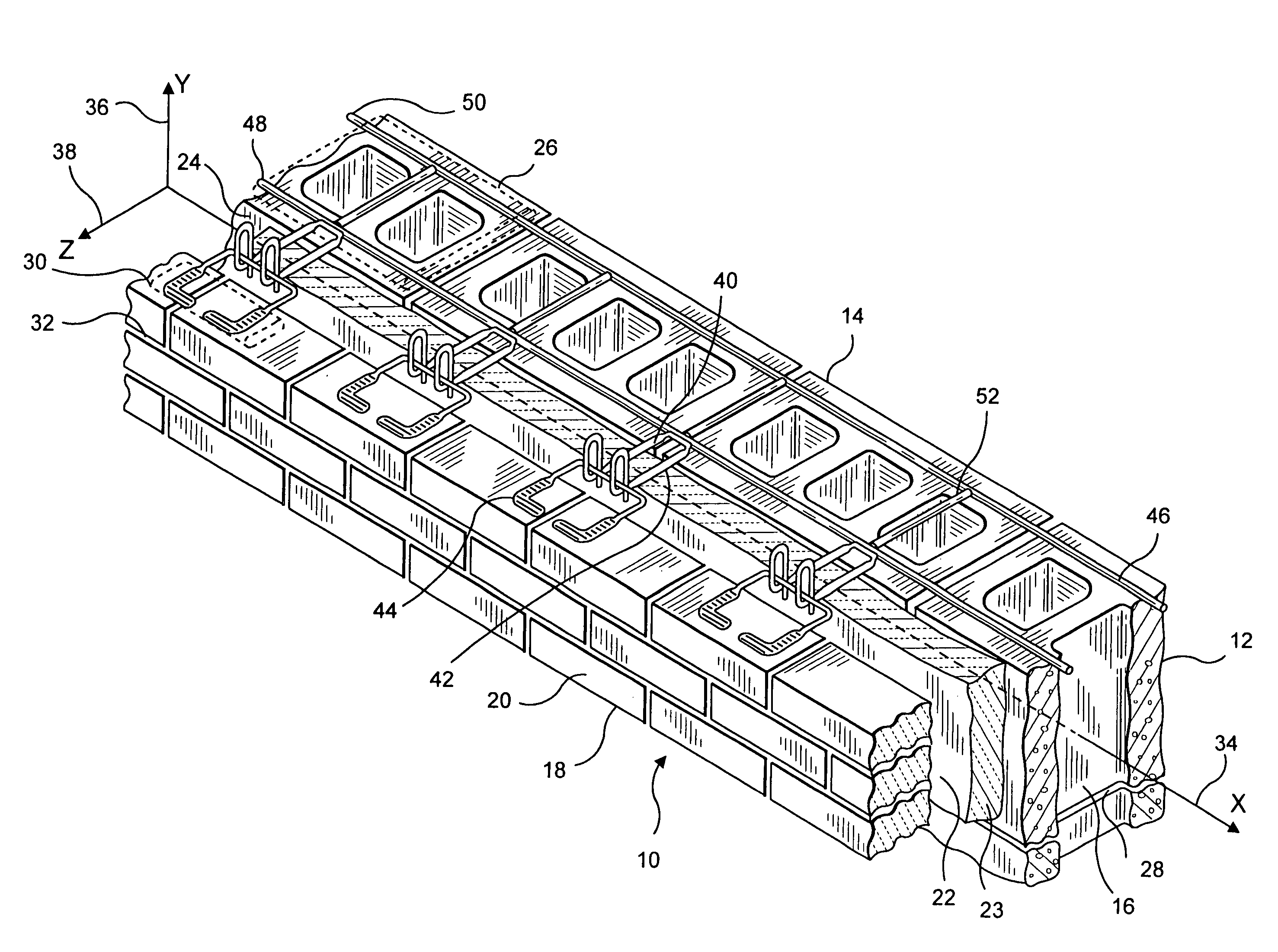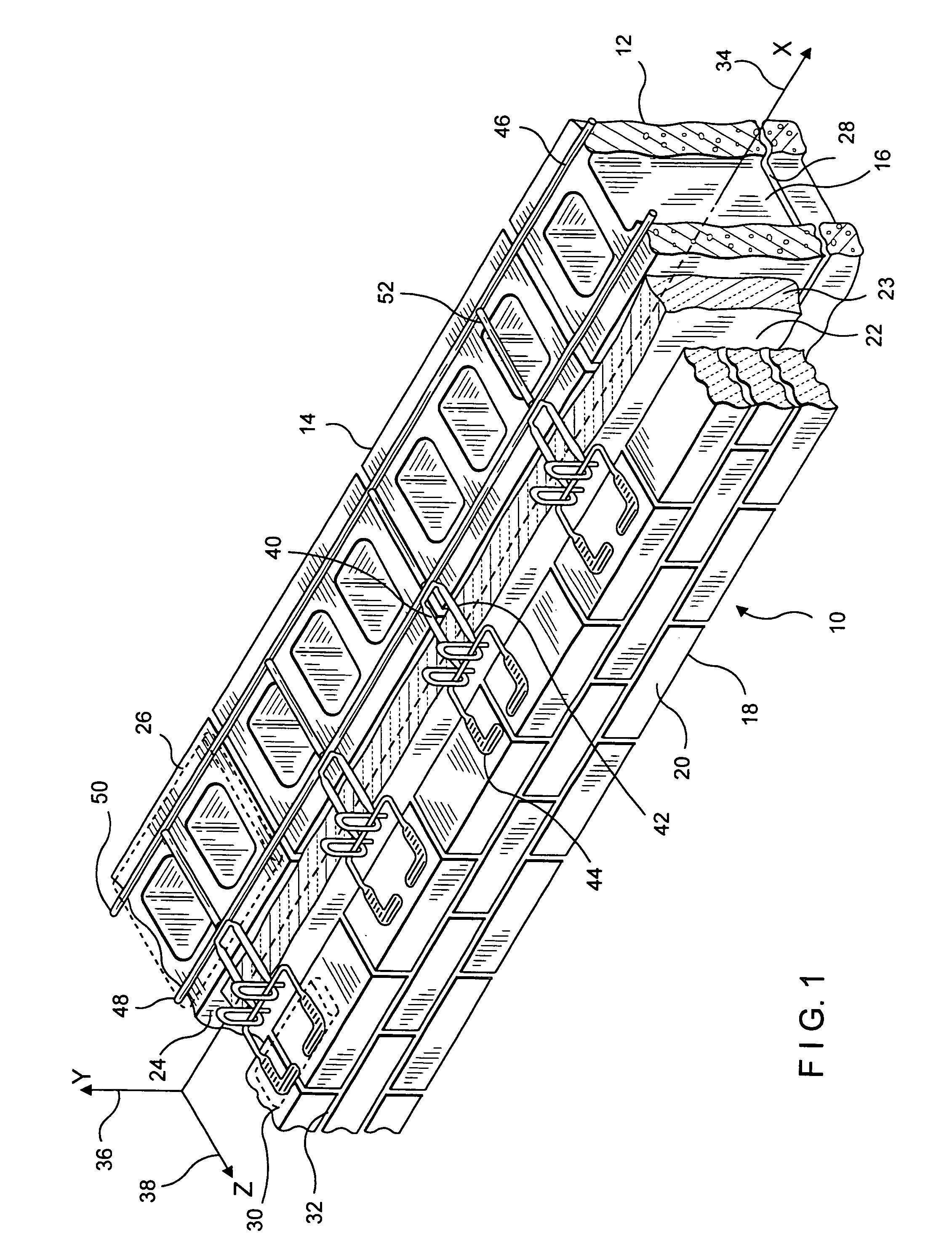Anchors and reinforcements for masonry walls
a technology of anchors and masonry walls, applied in the direction of structural elements, building components, constructions, etc., can solve the problems of inability to join, increase the height the thickness of the mortar layer vs. the diameter of the wire formative, etc., to achieve low unit cost, high cross-sectional area, and low cost
- Summary
- Abstract
- Description
- Claims
- Application Information
AI Technical Summary
Benefits of technology
Problems solved by technology
Method used
Image
Examples
Embodiment Construction
[0068]Before entering into the detailed Description of the Preferred Embodiments, several terms are defined, which terms will be revisited later, when some relevant analytical issues are discussed. When stronger joint reinforcements are required in the inner wythe or backup wall to support the stresses imparted by anchoring the outer wythe or veneer. As described hereinbelow, this is accomplished while still maintaining building code requirements for masonry structures, including the mortar bed joint height specification—most commonly 0.375 inches. Although thicker gauge wire formatives are used when required for greater strength, it is still desirable to have the bed joint mortar cover the wall anchor structure. Thus, the wall reinforcements are usually structured from 0.148 or 0.187 inch wire, and, in practical terms, the wire formatives hereof that are inserted into the bed joints of the inner and outer wythes have a height limited to approximately 0.187 inch.
[0069]In the detaile...
PUM
 Login to View More
Login to View More Abstract
Description
Claims
Application Information
 Login to View More
Login to View More - R&D
- Intellectual Property
- Life Sciences
- Materials
- Tech Scout
- Unparalleled Data Quality
- Higher Quality Content
- 60% Fewer Hallucinations
Browse by: Latest US Patents, China's latest patents, Technical Efficacy Thesaurus, Application Domain, Technology Topic, Popular Technical Reports.
© 2025 PatSnap. All rights reserved.Legal|Privacy policy|Modern Slavery Act Transparency Statement|Sitemap|About US| Contact US: help@patsnap.com



